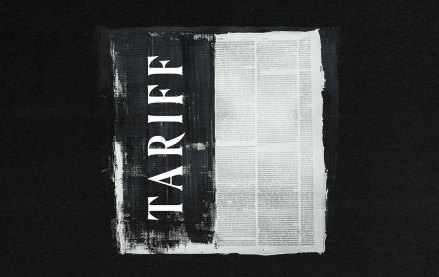Register by Jan 13 to save on passes and connect with marketers from Uber, Bose and more

Gavin Dunaway, marketing director, The Media Trust
Good news for local media, particularly news sites, has been in short supply for the last several years. However, the estimated $16 billion in U.S. political advertising spend expected in 2024 may be a lifeline for digital publications dealing with advertisers’ economic anxiety and overzealous brand safety blocking.
Still, publishers need to make sure there are no offensive political ads or disinformation being spread throughout their sites. With the American political environment more contentious than ever, an inability to manage inflammatory or misleading ads is why many publishers and ad tech platforms are hesitant with the vertical — despite the revenue potential.
However, it doesn’t have to be that way. Publishers can still deploy strategies to mitigate the risks of political ads and enjoy the revenue windfall, without tainting their brand or alienating audiences.
Sensitive subjects and misleading ads require nuance and tact
The vast majority of political ads are innocuous, and typically feature an image of a candidate, the position they’re running for and an inoffensive slogan. But as political content ramps up in September and October, local publishers are more likely to play Whac-a-Mole, with ad ops teams scouring sites looking for ads reported by users, editorial and executives. These pot-stirring ads — from both sides of the aisle — are meant to provoke.
Inflammatory ads are the tip of the iceberg. There are far more political issues that require nimble policy-making from publishers. Guns, LGBTQ+ rights and abortion are just some examples of divisive issues that are generating headlines and appearing in ads that may alienate audiences.
Additionally, deceptive practices like intentionally omitting the advertisement’s payment source, AI-altered images and deepfakes contribute to the spread of disinformation in political advertising.
Establishing policies reduces the risk around unwanted political ads
For publishers, the potential of offending audiences, sliding pageviews and engagement, and sullied brand reputation with political ads may make the revenue uptick pale in comparison. But mitigation strategies and tools are out there and easy to implement.
It’s important for editorial, executive and sales teams to discuss and determine publications’ acceptable political content thresholds around the most contentious advertising topics, like immigration and abortion. These policies will define what type of messaging and sloganeering is too much for audiences.
Publishers also have to decide their tolerance for the use of AI in political advertising. The good news is that major political agencies are refusing to use generative AI for creative development. The FCC wants to further regulate use of AI for political ad creation, but rules likely won’t be in time for the 2024 election — and bad actors will skirt them anyway. Until then, tools are also available for publishers to stop AI-created ads at the site or app level.
Partnerships and technology enable effective political ad monetization for publishers
Once guidelines are determined, publishers should bring these to their upstream partners, who filter out ads that don’t meet those policies.
DSPs and SSPs are also highly cautious about the risks around political advertising, and many have even decided to skip out. But there are top-notch upstream partners who take publisher concerns seriously in screening ad content, like DSPolitical. Using a creative gallery of all ads running on a site to pick out specific political ads that are unsavory can also make it easier for publishers to block unwanted ads.
September and October will be incredible months for political ad revenue for publishers. There’s still time for them to get in the game and, more importantly, reduce the risks while raking in the cash.
Sponsored by The Media Trust
More from Digiday

What does media spend look like for 2026? It could be worse — and it might be
Forecasts for 2026 media spend range from 6.6% on the lower end to over 10% but the primary beneficiaries will be commerce, social and search.

Pitch deck: How Amazon is emerging as the proof layer for TV spend
Amazon is positioning itself to advertisers as the “first-stop shop” for planning, buying, optimizing and measuring TV.

Here are the 2025 brand winners and losers of tariffs
Tariffs completely upended the retail industry in 2025 — and no company was left unscathed.








